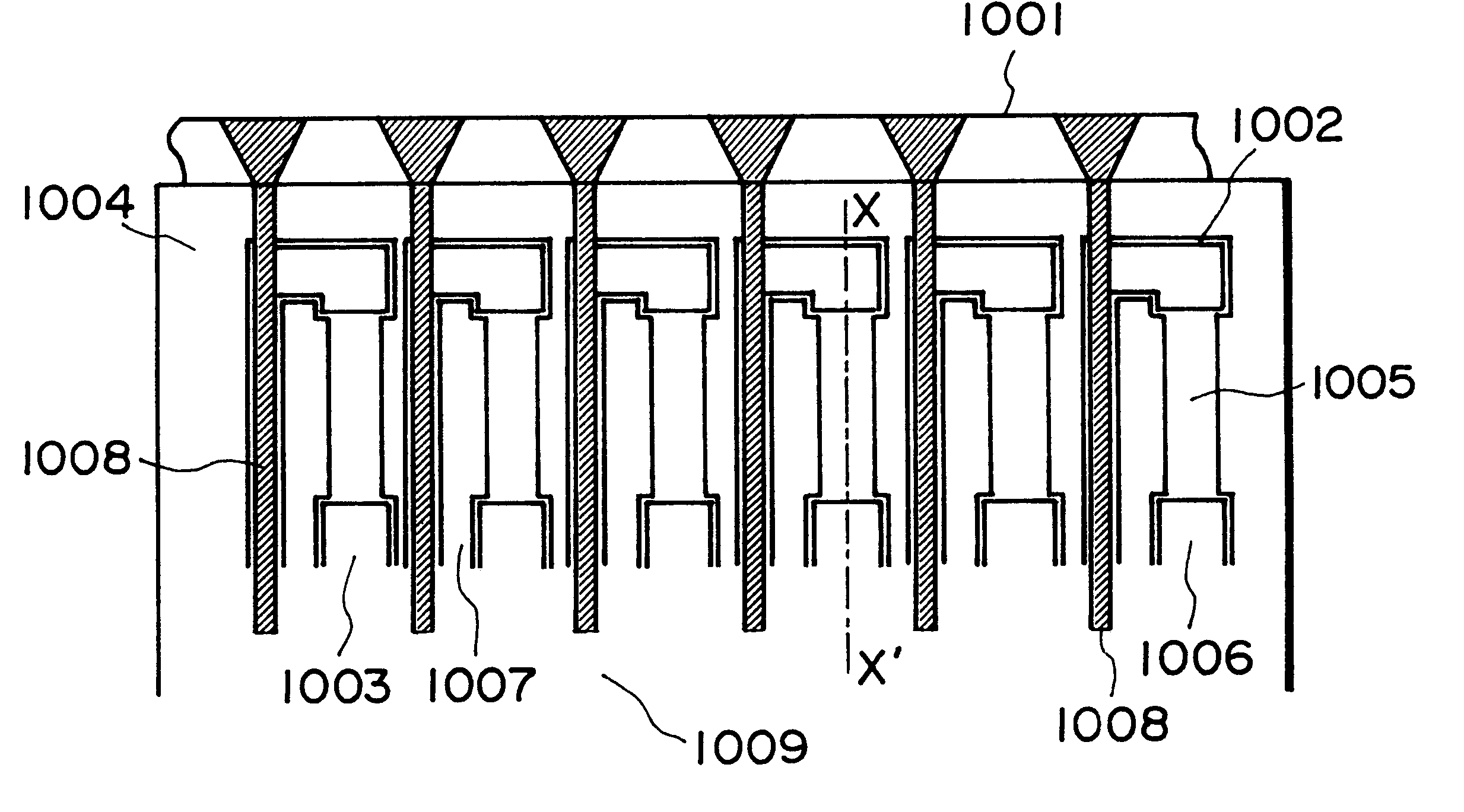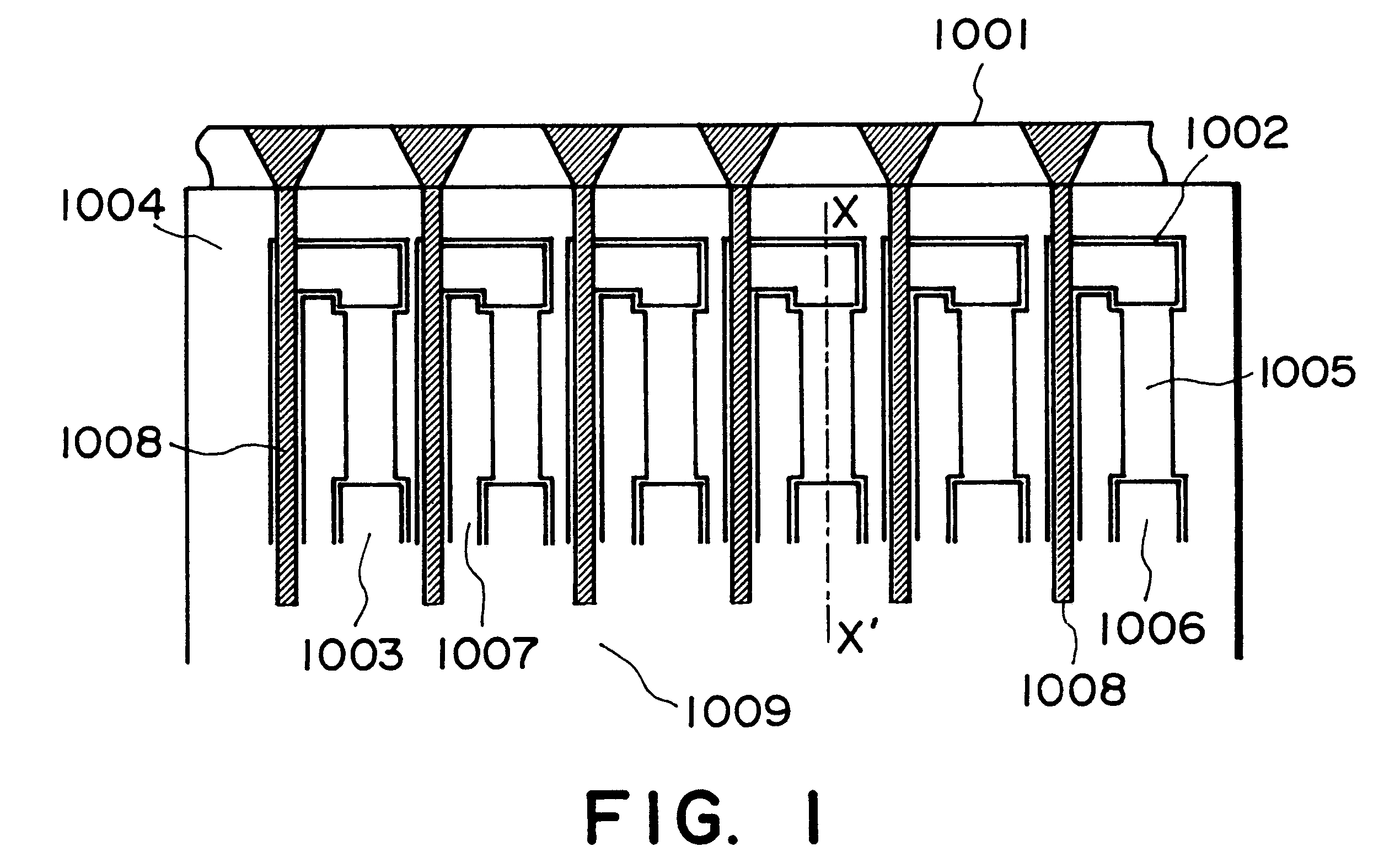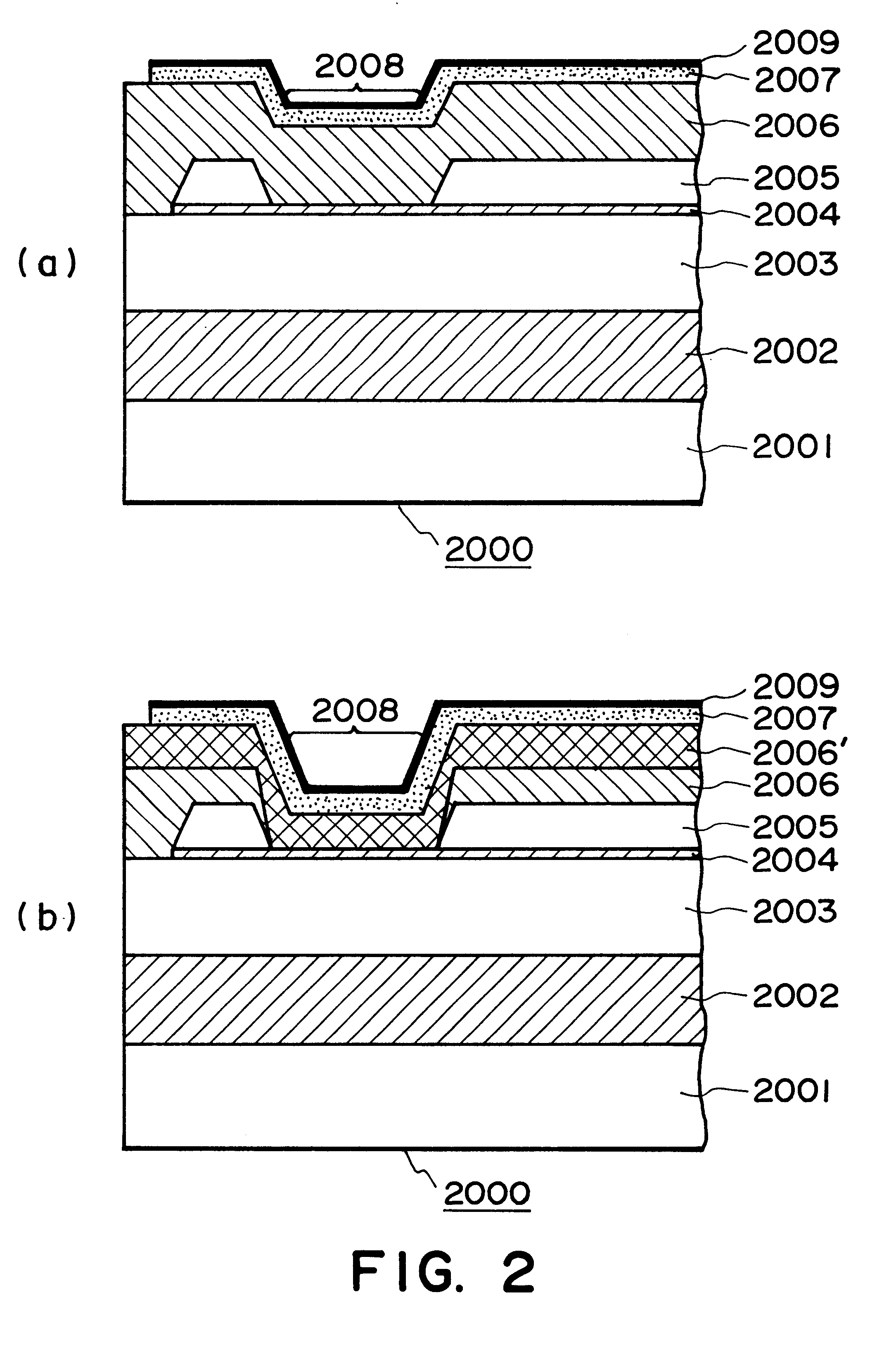Ink-jet head base board, ink-jet head, and ink-jet apparatus
a technology of inkjet head and inkjet head, which is applied in the field of inkjet head base board, inkjet head and inkjet apparatus, which can solve the problems of chemically affecting the ink itself, the proportion and the intense heat of the inkjet head
- Summary
- Abstract
- Description
- Claims
- Application Information
AI Technical Summary
Benefits of technology
Problems solved by technology
Method used
Image
Examples
embodiment 1
The substrate of the samples evaluated to determine the characteristics of the ink-jet in this embodiment was a piece of plane Si substrate, or a piece of Si substrate on which a driver IC had been already built in. In the case of the plane Si substrate, the heat storage layer 2002 (FIG. 2(b) ), that is, a 1.8 .mu.m thick layer of SiO.sub.2, was formed thereon by such a method as thermal oxidization, sputtering, CVD, or the like. In the case of the Si substrate with the IC, the heat storage layer, or the SiO.sub.2 layer, was formed similarly to the case of the Plane Si substrate, during its manufacturing process.
Next, an interlayer insulative film 2003, that is, a 1.2 .mu.m thick film of SiO.sub.2, was formed by sputtering, CVD, or the like methods. Next, the exothermic resistant layer 2004, that is, a 500 nm thick Ta.sub.35 Si.sub.22 N.sub.43 alloy layer, was formed by a method of reactive sputtering using a target formed of Ta--Si alloy. During the formation of this exothermic res...
embodiments 2-5
Ink-jet heads, which were identical to those in the first embodiment except that the top portion protecting layers 2007 were given the compositions and thicknesses shown in Table 2, were produced, and were tested for endurance like those in the first embodiment. The results are given in Table 2.
embodiments 6-9
Ink-jet heads, which were identical to those in the first embodiment except that the top portion protecting layers were formed using a method of sputtering in which a target formed of Ta--Fe--Cr--Ni alloy with a predetermined composition (atomic composition ratio), were used along with argon gas. The top portion protecting layers of these ink-jet heads were given the compositions and thicknesses shown in Table 2. These ink-jet heads were tested for endurance like those in the first embodiment. The results are given in Table 2.
The following became evident from the tests. That is, it became evident from the results given in Table 2, that the length of the printing life of a head depended on the compositional ratios among Ta, Fe, Ni and Cr within the top portion protecting layer, in particular, that the greater the ratio of Fe--Cr--Ni, the longer the length of the printing life of an ink-jet head; in other word, in the composition Ta.alpha.Fe.beta.Ni.gamma.Cr.delta. of the top portion ...
PUM
 Login to View More
Login to View More Abstract
Description
Claims
Application Information
 Login to View More
Login to View More - R&D
- Intellectual Property
- Life Sciences
- Materials
- Tech Scout
- Unparalleled Data Quality
- Higher Quality Content
- 60% Fewer Hallucinations
Browse by: Latest US Patents, China's latest patents, Technical Efficacy Thesaurus, Application Domain, Technology Topic, Popular Technical Reports.
© 2025 PatSnap. All rights reserved.Legal|Privacy policy|Modern Slavery Act Transparency Statement|Sitemap|About US| Contact US: help@patsnap.com



